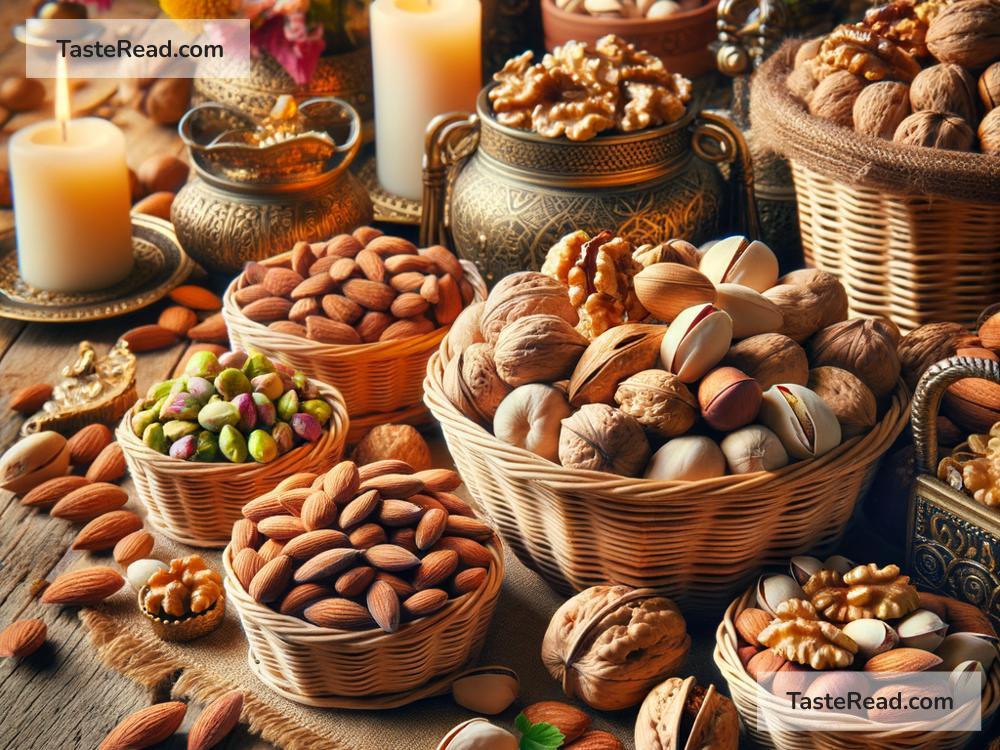How Nuts Became Sacred Offerings: A Journey Through History
Nuts might seem like common snacks today, but their history goes far beyond being a tasty treat. Across numerous cultures and religions, nuts have played an important role as sacred offerings. Whether used in rituals, ceremonies, or as gifts to gods, their religious significance is far richer than many imagine. But how did nuts transform from basic food into symbols of devotion and spirituality? Let’s dive into the story of how nuts became sacred offerings.
The Importance of Nature in Ancient Religions
To understand the role of nuts in religious rituals, we need to start with nature. In ancient times, people worshiped the natural world because it provided everything they needed to survive—sunlight, rain, crops, animals, and trees. Trees held special significance because they were seen as life-giving beings. They provided shelter, firewood, fruits, and seeds, many of which came in the form of nuts.
Nuts, in particular, held a unique charm. They were considered a gift of nature that was both nutritious and enduring. Unlike fruits, which spoil quickly, nuts could last for months, even years, without going bad. Their durability made them valuable not only for feeding families but also as a symbol of long-lasting blessings. Over time, this symbolism found its way into religious offerings.
Nuts as Gifts in Early Worship Rituals
In many early cultures, people believed gods and spirits needed to be thanked for their blessings. Offerings were made to show gratitude and ask for continued prosperity. The items offered to deities often included foods that humans valued most, and nuts were frequently chosen. Their high nutritional value and ability to stay fresh during storage made them suitable for rituals.
One of the earliest examples of offering nuts can be traced to ancient Greece. The Greeks honored their gods, such as Demeter (goddess of agriculture), with gifts of food during harvest festivals. Walnuts, almonds, and chestnuts were particularly popular because they symbolized abundance and fertility. These offerings were placed at altars or burned in sacred fires to communicate thanks or requests to the divine.
Similarly, in ancient India, nuts like coconuts and betel nuts became an essential part of Hindu rituals. Offering coconuts was seen as a way to show devotion, purity, and humility. The act of breaking open a coconut, which is considered auspicious, represents letting go of one’s ego and surrendering to God.
Symbolism of Nuts in Spiritual Beliefs
Nuts are small, yet they contain everything required to grow into a mighty tree. This ability to hold life inside a shell made people see nuts as sacred symbols. Their “hidden potential” represented mysteries of the universe and the divine power of creation. In many religions, nuts were associated with fertility, wisdom, and prosperity.
The hard shell of nuts added to their symbolic value. Breaking a nut’s shell before offering it was often metaphorical, representing the breaking of human barriers—both physical and spiritual—to connect with the divine. Nuts also represented resilience, as they could endure difficult conditions and still preserve life inside.
Across cultures, specific nuts gained unique meanings. In Christianity, almonds were often associated with divine favor and were mentioned in the Bible several times. For example, the almond tree was said to symbolize God’s watchfulness.
In Chinese culture, nuts like walnuts and pine nuts were considered lucky charms. They were often offered at temples to ask for protection and good fortune. Similarly, in ancient Persia, pistachios were associated with wealth and happiness, and they were included in offerings to deities.
Nuts in Modern Religious Practices
Even today, nuts continue to hold a sacred place in many religious practices. During Hindu festivals, such as Diwali, coconuts are broken as part of prayers to gods. Betel nuts are given during weddings and pujas to symbolize goodwill and blessings.
In Buddhism, nuts are used in temple offerings as a way to honor ancestors and deities. They are also offered during important ceremonies, like the Full Moon Festival, where gifts of food demonstrate gratitude.
In Jewish traditions, nuts like almonds and walnuts are included in meals during holy days such as Rosh Hashanah. They are seen as symbols of renewal and hope as worshippers prepare for the new year.
Even outside religious settings, nuts are often exchanged as gifts to represent goodwill and prosperity. For instance, during holidays, it’s common to find nuts packaged beautifully in festive baskets. These practices reflect the deeper cultural value nuts have carried for centuries.
Conclusion: More Than Just Food
While nuts are commonplace in kitchens today, they hold a history of spiritual importance that speaks to their sacred role in cultures around the world. Their nutritious value, long shelf-life, and symbolic meaning made them perfect offerings to gods and spirits. From ancient Greek altars to Hindu temples, nuts have been used to express gratitude, ask for blessings, and honor the divine.
The next time you crack open a walnut or slice into a coconut, remember its spiritual significance. These humble seeds have connected humanity to nature and divinity for generations. Nuts are more than just food—they are symbols of life, resilience, and faith.


